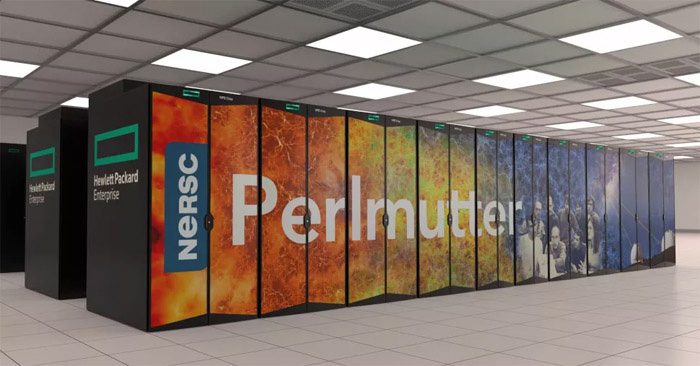Nvidia has launched a new supercomputer that is claimed to be the fastest in the world for AI at the National Energy Research Scientific Computing Center (NERSC) in California.
This supercomputer is named after astrophysicist Saul Perlmutter. Initially, it was tasked with creating the largest 3D map of the universe using over 6,000 Nvidia A100 Tensor Core GPUs on board.

This supercomputer is named after astrophysicist Saul Perlmutter.
Currently, the Perlmutter supercomputer has the capability to deliver nearly 4 exaFLOPS of AI performance, making it the “fastest system on the planet using AI mathematics based on mixed-precision calculations of 16 and 32 bits”, according to Nvidia. Its performance will be further enhanced as part of the “phase two”, with the introduction of a second core CPU group.
Once the system is complete, it is expected to rank among the top five supercomputers in the Top 500 ranking, which evaluates overall performance using the High-Performance Linpack (HPL) benchmark.
According to Nvidia, the Perlmutter system operates thanks to the contributions of over 7,000 researchers. Additionally, dozens of applications are also ready to “join” this project with the aim of advancing the fields of astronomy and climate science.
“In one project, the supercomputer will help create the largest visible 3D map of the universe to date. It will process data from the Dark Energy Spectroscopic Instrument (DESI), a type of space camera capable of capturing up to 5,000 galaxies in a single exposure,” explained Dion Harris, Head of Product Marketing at Nvidia HPC&AI.
According to Harris, researchers need the GPU speed of Perlmutter to capture dozens of exposures in one night to determine DESI’s position for the following night. Preparing a year’s worth of data for publication would take weeks or months based on previous systems, but with Perlmutter, this task will allow scientists to complete their work in just a few days.
It is hoped that once completed, the cosmic map will help researchers learn more about dark energy, the force behind the universe’s accelerating expansion. The discovery of dark energy in 2011 earned Saul Perlmutter a Nobel Prize.
Other projects set to run on the Perlmutter supercomputer also have similarly ambitious goals. Some of these will utilize the unique features of the Tensor cores in the A100 to simulate interactions between atoms, something that was previously impossible.
This research could prove miraculous in the field of materials science, with the potential to discover more efficient ways to develop batteries, biofuels, and similar technologies.




















































